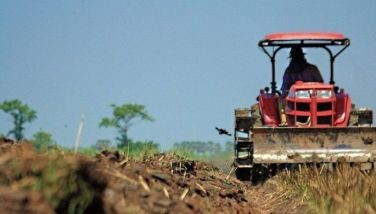Disaster food, anyone?
MANILA, Philippines - Following the evacuation of thousands of families after two storms ripped through the country, the Department of Science and Technology’s Food and Nutrition Research Institute (DOST-FNRI) released data on three food products it developed specifically for disasters and calamities.
Instant noodles fortified with squash, instant cream soups, and the compressed food bar “are stopgap measures to prevent the onset of malnutrition” in evacuation centers and areas affected by disasters and calamities, DOST-FNRI science research specialist Salvador Serrano told The STAR.
He said what makes these products suitable for disasters is that while the formula for each product is protected by a patent, they can all be made using readily available materials and packaged using “household level technology” using a portable sealer.
“Depending on the situation, you can make the products on site or use thicker (foil) packaging to make them suitable for airdrops in areas isolated by landslides or floods,” Serrano said.
He said local government units, in order to prepare for the worst, may contact DOST-FNRI chief Dr. Mario Capanzana. The DOST-FNRI can then forge a memorandum of understanding in order to teach the LGU’s workers how to make and pack each product.
Serrano said the products were developed in 1998, but no LGU has adopted the technology, either “because there were no resources or there was no will” to do so.
“Compared to other conventional food items used in disaster feeding operations (sardines, noodles, canned goods), these food products are relatively cheaper to produce, especially in bulk,” he said.
Serrano said these products are light and portable, but energy dense, and one piece or packet addresses one-third of the Required Energy and Nutrient Intake (RENI) for the day, and none of the products have monosodium glutamate.
Compressed food
Serrano said the compressed food has a taste and texture similar to polvoron, and can be eaten dry or prepared into porridge by just adding hot water.
“Compressed food is part of military food rations during operations and civilian missions. It is a ready-to-eat cereal-legume based nutritious food with milk, vegetable fat and sugar. The product is one of the best forms of products in times of disaster or calamity because it is light, compact, convenient to handle and store and easy to distribute,” according to a product description provided by the DOST-FNRI.
Each 30-gram piece provides 448 kilocalories, which represents eight percent of the day’s energy needs for children four to six years old. It also provides 16 percent of the children’s protein requirement for the day.
Instant cream soups
The DOST-FNRI developed two flavors for the instant cream soup powder, squash and mongo.
“Soup is an integral part of the Filipino diet because it awakens the taste buds, conditions the appetite and flushes the food smoothly down the throat. Aside from being an opening and intervening side dish, the FNRI transformed and developed cream soups suitable for energy and nutrition rehabilitation,” the agency said.
The DOST-FNRI said since the cream soups are in powdered form, they are “easy to handle and transport.” Evacuees can simply add the 30-gram pack in 250 milliliters of water, and consuming this soup will satisfy 28 percent of the protein and seven percent of the energy a four to six-year-old child needs for the day.
About 100 grams of the squash soup provides 347 kcal, while the mongo soup provides 373 kcal. The shelf life of the soup is about eight to nine months.
Instant noodles
DOST-FNRI says its version of the instant noodles for disaster feeding is “enriched with beta-carotene naturally present in squash. The product is a blend of wheat flour, carrots and onion leaves. Addition of hot boiling water to the product in cup will give a nutritious hot chicken-flavored noodle soup.”
A 25-gram serving, which can be packed in styropor cups, will provide 16 percent of the energy and 20 percent of the protein needs of a four to six-year-old child.
“The competitive advantage of the product over those available in the markets is its high nutritive value,” the DOST-FNRI said.
The agency said that 100 grams of noodles will provide 1.2 milligrams of beta-carotene.
The DOST-FNRI recommends that the noodles in cups be stored in a cool, dry place away from direct sunlight. “Stored under these conditions, the beta-carotene content of the product will be within the recommended level for a period of four months,” the agency said.
- Latest
























